XC2S200-5PQG208C and XC2S200-5PQ208C A Detailed Comparison
2.5V V FPGAs Spartan®-II Series 208-BFQFP 208
Compare XC2S200-5PQG208C's eco-friendly design with XC2S200-5PQ208C's wider temperature range to find the best FPGA for your project needs.
Product Introduction
When comparing XC2S200-5PQG208C and XC2S200-5PQ208C, you’ll notice that both models share identical specifications in terms of operational benchmarks. These include 200,000 gates, 5,292 logic elements, 57,344 RAM bits, and 140 I/O pins. Their supply voltage ranges from 2.375V to 2.625V, and both operate within temperatures of 0°C to 85°C.
However, the key difference lies in the package type. While XC2S200-5PQG208C uses a green package designed for environmental compliance, XC2S200-5PQ208C employs a standard package. This distinction matters if your project prioritizes eco-friendly components or specific regulatory requirements. Understanding these differences ensures you select the FPGA that aligns best with your application’s needs.
Specifications Overview
Package Type and Dimensions
When comparing the XC2S200-5PQG208C and XC2S200-5PQ208C, you’ll notice that both models share the same package type: 208-BFQFP. This package type refers to a 208-pin plastic quad flat package, which is compact and suitable for high-density circuit designs. The dimensions of the package ensure compatibility with standard PCB layouts, making it easier for you to integrate these FPGAs into your projects.
However, the XC2S200-5PQG208C stands out due to its green package. This environmentally friendly design complies with RoHS (Restriction of Hazardous Substances) standards, which restrict the use of certain hazardous materials in electronic components. If your project requires eco-friendly components or adherence to strict environmental regulations, this model becomes the better choice. On the other hand, the XC2S200-5PQ208C uses a standard package, which may suffice for applications without such requirements.
Number of Logic Elements
Both models feature 5,292 logic elements, which are the building blocks of their programmable logic. These elements allow you to implement complex digital circuits, making them suitable for a wide range of applications. The number of logic elements directly impacts the FPGA’s ability to handle intricate designs. With 5,292 elements, you can create designs that require moderate complexity, such as signal processing or control systems.
The identical number of logic elements in both models ensures that you won’t need to compromise on design capabilities when choosing between them. Whether you select the XC2S200-5PQG208C or the XC2S200-5PQ208C, you’ll have the same level of flexibility for your digital designs.
I/O Pins and Connectivity
Connectivity plays a crucial role in FPGA performance, and both models offer 140 I/O pins. These pins allow you to interface the FPGA with external devices, such as sensors, actuators, or other digital systems. The high number of I/O pins ensures that you can connect multiple peripherals simultaneously, making these FPGAs versatile for various applications.
The I/O pins in both models support advanced connectivity features, including differential signaling and high-speed data transfer. This makes them suitable for applications requiring reliable and fast communication. Whether you’re working on a data acquisition system or a communication module, the 140 I/O pins provide ample connectivity options.
| Feature | XC2S200-5PQG208C | XC2S200-5PQ208C |
|---|---|---|
| Package | 208-BFQFP | 208-BFQFP |
| Number of Logic Elements/Cells | 5292 | 5292 |
| Number of I/O | 140 | 140 |
Both models share identical specifications in terms of logic elements and I/O pins. However, the XC2S200-5PQG208C’s green package gives it an edge for environmentally conscious projects.
Voltage Range and Power Requirements
When selecting an FPGA, understanding its voltage range and power requirements is essential. Both the XC2S200-5PQG208C and XC2S200-5PQ208C operate within a supply voltage range of 2.375V to 2.625V. This range ensures compatibility with most standard power supplies used in electronic systems. You can confidently integrate either model into your design without worrying about voltage mismatches.
Efficient power consumption is another critical factor. These FPGAs are designed to optimize energy usage, making them suitable for applications where power efficiency is a priority. Whether you're working on portable devices or energy-sensitive systems, these models provide reliable performance without excessive power draw.
Tip: Always verify the power supply specifications of your system to ensure they align with the FPGA's voltage requirements. This step can prevent potential issues during operation.
Operating Temperature and Environmental Tolerances
The operating temperature range of an FPGA determines its suitability for different environments. The XC2S200-5PQG208C operates between 0°C and 85°C, making it ideal for standard commercial applications. On the other hand, the XC2S200-5PQ208C offers a broader range, from -40°C to 100°C. This extended range makes it a better choice for industrial or outdoor applications where extreme temperatures are common.
| Model | Operating Temperature Range |
|---|---|
| XC2S200-5PQG208C | 0°C to 85°C |
| XC2S200-5PQ208C | -40°C to 100°C |
The XC2S200-5PQ208C's wider temperature tolerance provides greater flexibility. If your project involves harsh environmental conditions, this model ensures reliable performance. However, for typical indoor or controlled environments, the XC2S200-5PQG208C remains a dependable option.
Note: Consider the environmental conditions of your application before choosing an FPGA. Extreme temperatures can impact performance and longevity if the device isn't rated for such conditions.
Performance Comparison
Clock Speed and Processing Power
Clock speed determines how fast an FPGA can process instructions. Both the XC2S200-5PQG208C and XC2S200-5PQ208C operate at a maximum clock speed of 200 MHz. This speed allows you to handle tasks that require moderate processing power, such as signal processing or data manipulation.
The processing power of these FPGAs depends on their ability to execute instructions efficiently. With a clock speed of 200 MHz, you can expect reliable performance for most commercial and industrial applications. However, if your project involves extremely high-speed operations, you may need to consider additional optimization techniques or external components to enhance performance.
Tip: To maximize processing power, ensure your design minimizes unnecessary logic and optimizes resource usage. This approach can help you achieve better performance without exceeding the FPGA's clock speed limits.
Number of Gates and Logic Density
The number of gates and logic density directly impact the complexity of designs you can implement. Both models feature 200,000 gates, providing ample capacity for creating intricate digital circuits. This gate count allows you to design systems with multiple functionalities, such as control units or communication modules.
Logic density refers to how efficiently the FPGA utilizes its gates. With 5,292 logic elements, these FPGAs offer a balanced combination of capacity and efficiency. You can implement designs that require moderate complexity without worrying about resource limitations.
If your project involves high-density designs, such as advanced signal processing or machine learning algorithms, these FPGAs provide a solid foundation. Their logic density ensures you can achieve your design goals without compromising performance.
RAM Capacity and Memory Features
Memory plays a crucial role in FPGA performance. Both the XC2S200-5PQG208C and XC2S200-5PQ208C include 57,344 bits of RAM. This capacity supports temporary data storage, enabling efficient processing of complex tasks.
The RAM in these FPGAs is distributed across the chip, allowing you to access memory resources where they are needed most. This feature enhances performance by reducing latency and improving data flow. You can use this memory for tasks such as buffering, caching, or storing intermediate results.
For applications requiring extensive memory usage, such as video processing or large data sets, the available RAM provides sufficient capacity. However, if your project demands higher memory capacity, consider external memory modules to complement the FPGA's built-in resources.
Note: Efficient memory management is essential for optimizing FPGA performance. Plan your memory usage carefully to avoid bottlenecks and ensure smooth operation.
Impact on Real-World Applications
When choosing an FPGA, understanding its impact on real-world applications helps you make an informed decision. Both the XC2S200-5PQG208C and XC2S200-5PQ208C excel in various scenarios, but their unique features make them suitable for specific use cases.
Commercial Applications
The XC2S200-5PQG208C works well in commercial environments. Its operating temperature range of 0°C to 85°C matches the conditions found in most offices, labs, and controlled settings. You can use it in devices like consumer electronics, home automation systems, or standard communication modules. Its green package also makes it ideal for projects that prioritize environmental compliance. For example, if you are developing a product for markets with strict RoHS regulations, this model ensures you meet those standards.
Industrial and Outdoor Applications
The XC2S200-5PQ208C shines in industrial and outdoor environments. Its extended temperature range of -40°C to 100°C allows it to function reliably in harsh conditions. You can deploy it in applications like industrial automation, outdoor monitoring systems, or automotive electronics. For instance, if your project involves equipment exposed to extreme heat or cold, this model provides the durability you need.
High-Performance Computing
Both models handle tasks requiring moderate processing power, such as signal processing or data manipulation. Their 200 MHz clock speed and 200,000 gates enable you to implement designs with multiple functionalities. Whether you are working on a data acquisition system or a control unit, these FPGAs deliver consistent performance.
Eco-Friendly Projects
If your project emphasizes sustainability, the XC2S200-5PQG208C offers a clear advantage. Its green package aligns with eco-friendly initiatives, making it a preferred choice for companies aiming to reduce their environmental footprint. This feature not only supports regulatory compliance but also enhances the marketability of your product.
Tip: Always consider the environmental and operational requirements of your project. Choosing the right FPGA ensures optimal performance and long-term reliability.
Versatility Across Applications
Both models provide 140 I/O pins and 57,344 bits of RAM, making them versatile for a wide range of applications. You can use them in fields like robotics, telecommunications, or medical devices. Their balanced combination of logic density and memory capacity allows you to implement designs with moderate complexity without compromising performance.
Note: Evaluate your project's specific needs, such as temperature tolerance, environmental compliance, and processing requirements, before selecting an FPGA.
Applications and Use Cases
Typical Applications for XC2S200-5PQG208C
The XC2S200-5PQG208C is ideal for projects that prioritize environmental compliance. You can use it in consumer electronics, such as smart home devices or wearable technology. Its green package ensures adherence to RoHS standards, making it suitable for markets with strict environmental regulations. This model also works well in educational tools and prototypes where eco-friendly components are preferred.
In addition, the XC2S200-5PQG208C performs reliably in commercial applications. It fits perfectly in office automation systems, communication modules, and standard control units. If your project involves moderate processing tasks, like signal processing or data acquisition, this FPGA provides the necessary performance without exceeding power limits.
Tip: Consider this model if your project requires compliance with environmental standards or operates in controlled indoor environments.
Typical Applications for XC2S200-5PQ208C
The XC2S200-5PQ208C excels in industrial and outdoor environments. Its extended temperature range makes it suitable for applications like industrial automation, outdoor monitoring systems, and automotive electronics. For example, you can use it in equipment exposed to extreme heat or cold, such as weather stations or vehicle control units.
This model also supports high-reliability systems. Its robust design ensures consistent performance in harsh conditions. You can deploy it in medical devices, robotics, or telecommunications infrastructure. If your project demands durability and flexibility, the XC2S200-5PQ208C is a dependable choice.
Note: This model is better suited for environments with fluctuating or extreme temperatures.
Scenarios Where One Model is Preferred Over the Other
Choose the XC2S200-5PQG208C for projects that emphasize sustainability or operate in standard commercial settings. Its green package aligns with eco-friendly initiatives, making it a great option for environmentally conscious designs.
On the other hand, the XC2S200-5PQ208C is the better choice for industrial or outdoor applications. Its ability to withstand extreme temperatures ensures reliability in challenging environments. If your project involves rugged conditions or requires long-term durability, this model offers the best performance.
Tip: Evaluate your project’s environmental and operational needs to select the most suitable FPGA.
Pros and Cons
Advantages of XC2S200-5PQG208C
Eco-Friendly Design: The XC2S200-5PQG208C features a green package that complies with RoHS standards. This makes it ideal for projects requiring environmentally sustainable components.
Commercial Suitability: Its operating temperature range of 0°C to 85°C matches most indoor environments. You can use it confidently in offices, labs, or controlled settings.
Regulatory Compliance: If your project targets markets with strict environmental regulations, this model ensures adherence to those standards.
Compact Package: The 208-BFQFP package allows easy integration into high-density circuit designs.
Tip: Choose this model for eco-conscious projects or applications in standard commercial environments.
Disadvantages of XC2S200-5PQG208C
Limited Temperature Range: The operating temperature range restricts its use in extreme conditions. It may not perform reliably in industrial or outdoor environments.
Less Durable: Compared to the XC2S200-5PQ208C, this model lacks the robustness needed for harsh environments.
Specific Use Case: Its green package adds value only for projects emphasizing environmental compliance. For other applications, this feature may not be necessary.
Note: Consider the environmental conditions of your project before selecting this model.
Advantages of XC2S200-5PQ208C
Wide Temperature Range: The XC2S200-5PQ208C operates between -40°C and 100°C. This makes it suitable for industrial and outdoor applications.
Durability: Its design ensures reliable performance in harsh conditions, such as extreme heat or cold.
Versatility: You can deploy this model in diverse fields, including automotive electronics, industrial automation, and outdoor monitoring systems.
High Reliability: Its robust construction supports long-term use in challenging environments.
Tip: Use this model for projects requiring durability and flexibility in extreme conditions.
Disadvantages of XC2S200-5PQ208C
While the XC2S200-5PQ208C offers impressive features, it does come with a few drawbacks that you should consider before choosing it for your project.
Higher Cost: The extended temperature range and robust design of this model often result in a higher price compared to the XC2S200-5PQG208C. If your project doesn’t require extreme temperature tolerance, this additional cost might not be justifiable.
Environmental Impact: Unlike the XC2S200-5PQG208C, this model lacks a green package. It doesn’t comply with RoHS standards, which restrict the use of hazardous materials. If your project targets eco-conscious markets or regions with strict environmental regulations, this could pose a challenge.
Overengineering for Some Applications: The durability and wide temperature range of the XC2S200-5PQ208C make it ideal for harsh environments. However, these features may be unnecessary for standard commercial or indoor projects. Using this model in such cases could lead to overengineering, increasing costs and complexity without adding significant value.
Tip: Evaluate your project’s specific requirements. If you don’t need the extended temperature range or rugged design, consider whether the additional cost and environmental trade-offs are worth it.
Limited Appeal for Eco-Friendly Projects: If sustainability is a priority, this model may not align with your goals. Its standard package doesn’t support initiatives aimed at reducing environmental impact.
Note: Always weigh the benefits of durability and flexibility against the potential downsides, such as cost and environmental considerations. This ensures you select the FPGA that best fits your project’s needs.
By understanding these limitations, you can make an informed decision about whether the XC2S200-5PQ208C is the right choice for your application.
When comparing XC2S200-5PQG208C and XC2S200-5PQ208C, you’ll find they share many similarities, such as the same number of logic elements, I/O pins, and voltage range. However, their differences lie in environmental compliance and temperature tolerance. The XC2S200-5PQG208C features a green package, making it ideal for eco-friendly projects, while the XC2S200-5PQ208C offers a wider operating temperature range, making it better suited for industrial or outdoor applications.
To choose the right FPGA, consider your project’s specific needs. For environmentally conscious designs, the XC2S200-5PQG208C is the better choice. If your application requires durability in extreme conditions, the XC2S200-5PQ208C provides the reliability you need. Understanding specifications like power efficiency, productivity, and reliability ensures you select the FPGA that aligns with your goals.
| Performance Metric | Description |
|---|---|
| Power Efficiency | Optimized for power-sensitive applications, ensuring energy-efficient performance. |
| Productivity | Enhanced by tools like incremental compilation for faster design cycles. |
| Quality and Reliability | Evaluated through empirical data to meet mission-specific requirements. |
| Past Performance | Assessed through production schedules and test results for consistent delivery. |
Tip: Always evaluate your project’s environmental and operational requirements before selecting an FPGA. This ensures optimal performance and long-term success.
FAQ
What is the main difference between XC2S200-5PQG208C and XC2S200-5PQ208C?
The primary difference lies in the package type. The XC2S200-5PQG208C features a green, RoHS-compliant package, while the XC2S200-5PQ208C uses a standard package. This distinction impacts environmental compliance and suitability for eco-conscious projects.
Tip: Choose the green package for sustainability-focused designs.
Which model is better for extreme temperature environments?
The XC2S200-5PQ208C performs better in extreme conditions. It operates between -40°C and 100°C, making it ideal for industrial or outdoor applications. The XC2S200-5PQG208C, with its 0°C to 85°C range, suits controlled indoor environments.
Note: Always match the operating temperature range to your project’s environment.
Can I use these FPGAs for high-speed applications?
Yes, both models support a maximum clock speed of 200 MHz. This makes them suitable for moderate-speed applications like signal processing or data manipulation. For extremely high-speed tasks, additional optimization may be necessary.
Tip: Optimize your design to maximize performance within the clock speed limits.
Are these FPGAs energy-efficient?
Both models operate within a voltage range of 2.375V to 2.625V, ensuring energy-efficient performance. Their design minimizes power consumption, making them suitable for portable or energy-sensitive devices.
Tip: Verify your system’s power supply compatibility to avoid operational issues.
How do I decide which FPGA to choose?
Evaluate your project’s requirements. If you need environmental compliance, go with the XC2S200-5PQG208C. For durability in harsh conditions, the XC2S200-5PQ208C is the better choice. Consider factors like temperature range, sustainability, and cost.
Note: Matching the FPGA to your project’s needs ensures optimal performance and reliability.
Specifications
- TypeParameter
- Factory Lead Time10 Weeks
- Mount
In electronic components, the term "Mount" typically refers to the method or process of physically attaching or fixing a component onto a circuit board or other electronic device. This can involve soldering, adhesive bonding, or other techniques to secure the component in place. The mounting process is crucial for ensuring proper electrical connections and mechanical stability within the electronic system. Different components may have specific mounting requirements based on their size, shape, and function, and manufacturers provide guidelines for proper mounting procedures to ensure optimal performance and reliability of the electronic device.
Surface Mount - Mounting Type
The "Mounting Type" in electronic components refers to the method used to attach or connect a component to a circuit board or other substrate, such as through-hole, surface-mount, or panel mount.
Surface Mount - Package / Case
refers to the protective housing that encases an electronic component, providing mechanical support, electrical connections, and thermal management.
208-BFQFP - Number of Pins208
- Number of I/Os140
- Operating Temperature
The operating temperature is the range of ambient temperature within which a power supply, or any other electrical equipment, operate in. This ranges from a minimum operating temperature, to a peak or maximum operating temperature, outside which, the power supply may fail.
0°C~85°C TJ - Packaging
Semiconductor package is a carrier / shell used to contain and cover one or more semiconductor components or integrated circuits. The material of the shell can be metal, plastic, glass or ceramic.
Tray - Series
In electronic components, the "Series" refers to a group of products that share similar characteristics, designs, or functionalities, often produced by the same manufacturer. These components within a series typically have common specifications but may vary in terms of voltage, power, or packaging to meet different application needs. The series name helps identify and differentiate between various product lines within a manufacturer's catalog.
Spartan®-II - Published2008
- JESD-609 Code
The "JESD-609 Code" in electronic components refers to a standardized marking code that indicates the lead-free solder composition and finish of electronic components for compliance with environmental regulations.
e3 - Pbfree Code
The "Pbfree Code" parameter in electronic components refers to the code or marking used to indicate that the component is lead-free. Lead (Pb) is a toxic substance that has been widely used in electronic components for many years, but due to environmental concerns, there has been a shift towards lead-free alternatives. The Pbfree Code helps manufacturers and users easily identify components that do not contain lead, ensuring compliance with regulations and promoting environmentally friendly practices. It is important to pay attention to the Pbfree Code when selecting electronic components to ensure they meet the necessary requirements for lead-free applications.
yes - Part Status
Parts can have many statuses as they progress through the configuration, analysis, review, and approval stages.
Active - Moisture Sensitivity Level (MSL)
Moisture Sensitivity Level (MSL) is a standardized rating that indicates the susceptibility of electronic components, particularly semiconductors, to moisture-induced damage during storage and the soldering process, defining the allowable exposure time to ambient conditions before they require special handling or baking to prevent failures
3 (168 Hours) - Number of Terminations208
- ECCN Code
An ECCN (Export Control Classification Number) is an alphanumeric code used by the U.S. Bureau of Industry and Security to identify and categorize electronic components and other dual-use items that may require an export license based on their technical characteristics and potential for military use.
EAR99 - Terminal Finish
Terminal Finish refers to the surface treatment applied to the terminals or leads of electronic components to enhance their performance and longevity. It can improve solderability, corrosion resistance, and overall reliability of the connection in electronic assemblies. Common finishes include nickel, gold, and tin, each possessing distinct properties suitable for various applications. The choice of terminal finish can significantly impact the durability and effectiveness of electronic devices.
Matte Tin (Sn) - Voltage - Supply
Voltage - Supply refers to the range of voltage levels that an electronic component or circuit is designed to operate with. It indicates the minimum and maximum supply voltage that can be applied for the device to function properly. Providing supply voltages outside this range can lead to malfunction, damage, or reduced performance. This parameter is critical for ensuring compatibility between different components in a circuit.
2.375V~2.625V - Terminal Position
In electronic components, the term "Terminal Position" refers to the physical location of the connection points on the component where external electrical connections can be made. These connection points, known as terminals, are typically used to attach wires, leads, or other components to the main body of the electronic component. The terminal position is important for ensuring proper connectivity and functionality of the component within a circuit. It is often specified in technical datasheets or component specifications to help designers and engineers understand how to properly integrate the component into their circuit designs.
QUAD - Terminal Form
Occurring at or forming the end of a series, succession, or the like; closing; concluding.
GULL WING - Peak Reflow Temperature (Cel)
Peak Reflow Temperature (Cel) is a parameter that specifies the maximum temperature at which an electronic component can be exposed during the reflow soldering process. Reflow soldering is a common method used to attach electronic components to a circuit board. The Peak Reflow Temperature is crucial because it ensures that the component is not damaged or degraded during the soldering process. Exceeding the specified Peak Reflow Temperature can lead to issues such as component failure, reduced performance, or even permanent damage to the component. It is important for manufacturers and assemblers to adhere to the recommended Peak Reflow Temperature to ensure the reliability and functionality of the electronic components.
245 - Supply Voltage
Supply voltage refers to the electrical potential difference provided to an electronic component or circuit. It is crucial for the proper operation of devices, as it powers their functions and determines performance characteristics. The supply voltage must be within specified limits to ensure reliability and prevent damage to components. Different electronic devices have specific supply voltage requirements, which can vary widely depending on their design and intended application.
2.5V - Time@Peak Reflow Temperature-Max (s)
Time@Peak Reflow Temperature-Max (s) refers to the maximum duration that an electronic component can be exposed to the peak reflow temperature during the soldering process, which is crucial for ensuring reliable solder joint formation without damaging the component.
30 - Base Part Number
The "Base Part Number" (BPN) in electronic components serves a similar purpose to the "Base Product Number." It refers to the primary identifier for a component that captures the essential characteristics shared by a group of similar components. The BPN provides a fundamental way to reference a family or series of components without specifying all the variations and specific details.
XC2S200 - Pin Count
a count of all of the component leads (or pins)
208 - Number of Outputs284
- Qualification Status
An indicator of formal certification of qualifications.
Not Qualified - Operating Supply Voltage
The voltage level by which an electrical system is designated and to which certain operating characteristics of the system are related.
2.5V - RAM Size
RAM size refers to the amount of random access memory (RAM) available in an electronic component, such as a computer or smartphone. RAM is a type of volatile memory that stores data and instructions that are actively being used by the device's processor. The RAM size is typically measured in gigabytes (GB) and determines how much data the device can store and access quickly for processing. A larger RAM size allows for smoother multitasking, faster loading times, and better overall performance of the electronic component. It is an important factor to consider when choosing a device, especially for tasks that require a lot of memory, such as gaming, video editing, or running multiple applications simultaneously.
7kB - Clock Frequency
Clock frequency, also known as clock speed, refers to the rate at which a processor or electronic component can execute instructions. It is measured in hertz (Hz) and represents the number of cycles per second that the component can perform. A higher clock frequency typically indicates a faster processing speed and better performance. However, it is important to note that other factors such as architecture, efficiency, and workload also play a significant role in determining the overall performance of a component. In summary, clock frequency is a crucial parameter that influences the speed and efficiency of electronic components in processing data and executing tasks.
263MHz - Programmable Logic Type
Generally, programmable logic devices can be described as being one of three different types: Simple programmable logic devices (SPLD) Complex programmable logic devices (CPLD) Field programmable logic devices (FPGA).
FIELD PROGRAMMABLE GATE ARRAY - Number of Logic Elements/Cells5292
- Total RAM Bits
Total RAM Bits refers to the total number of memory bits that can be stored in a Random Access Memory (RAM) component. RAM is a type of computer memory that allows data to be accessed in any random order, making it faster than other types of memory like hard drives. The total RAM bits indicate the capacity of the RAM chip to store data temporarily for quick access by the computer's processor. The more total RAM bits a component has, the more data it can store and process at any given time, leading to improved performance and multitasking capabilities.
57344 - Number of Gates
The number of gates per IC varies depending on the number of inputs per gate. Two?input gates are common, but if only a single input is required, such as in the 744 NOT(or inverter) gates, a 14 pin IC can accommodate 6 (or Hex) gates.
200000 - Number of LABs/CLBs1176
- Speed Grade
Speed grade is a specification in electronic components that indicates the maximum operating speed at which the component can reliably function. It is commonly used for integrated circuits, particularly in digital logic devices and programmable logic devices. The speed grade is typically denoted by a number or letter code that correlates to the maximum frequency or propagation delay of the device, influencing its performance in high-speed applications. Components with higher speed grades are capable of faster processing and lower signal delay compared to those with lower grades.
5 - Combinatorial Delay of a CLB-Max
The Combinatorial Delay of a CLB-Max in electronic components refers to the time it takes for a signal to propagate through a combinational logic block (CLB) within a Field-Programmable Gate Array (FPGA) to reach its output. This delay is influenced by factors such as the complexity of the logic function being implemented, the routing resources available, and the physical distance the signal needs to travel within the CLB. Understanding and optimizing the Combinatorial Delay of a CLB-Max is crucial in designing efficient and high-performance digital circuits, as it directly impacts the overall speed and functionality of the FPGA design. By minimizing this delay, designers can achieve faster operation and improved performance in their electronic systems.
0.7 ns - Height3.4mm
- Length28mm
- Width28mm
- RoHS Status
RoHS means “Restriction of Certain Hazardous Substances” in the “Hazardous Substances Directive” in electrical and electronic equipment.
ROHS3 Compliant - Lead Free
Lead Free is a term used to describe electronic components that do not contain lead as part of their composition. Lead is a toxic material that can have harmful effects on human health and the environment, so the electronics industry has been moving towards lead-free components to reduce these risks. Lead-free components are typically made using alternative materials such as silver, copper, and tin. Manufacturers must comply with regulations such as the Restriction of Hazardous Substances (RoHS) directive to ensure that their products are lead-free and environmentally friendly.
Lead Free
Parts with Similar Specs
- ImagePart NumberManufacturerPackage / CaseNumber of PinsNumber of Logic Elements/CellsNumber of I/ONumber of GatesRAM SizeSupply VoltagePin CountView Compare
XC2S200-5PQG208C
208-BFQFP
208
5292
140
200000
7 kB
2.5 V
208
208-BFQFP
208
3888
140
150000
6 kB
2.5 V
208
208-BFQFP
208
5292
140
200000
7 kB
2.5 V
208
208-BFQFP
208
5292
140
200000
7 kB
2.5 V
208
Datasheet PDF
- Datasheets :
- PCN Assembly/Origin :
- Environmental Information :
 MPM-15-12 vs MPM-15-15: Choosing the Right Option
MPM-15-12 vs MPM-15-15: Choosing the Right Option27 May 2025141
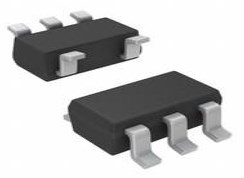 SN74LVC1G06DCKR Single Inverter Buffer/Driver: Diagram, Pinout, and Datasheet
SN74LVC1G06DCKR Single Inverter Buffer/Driver: Diagram, Pinout, and Datasheet12 April 20221006
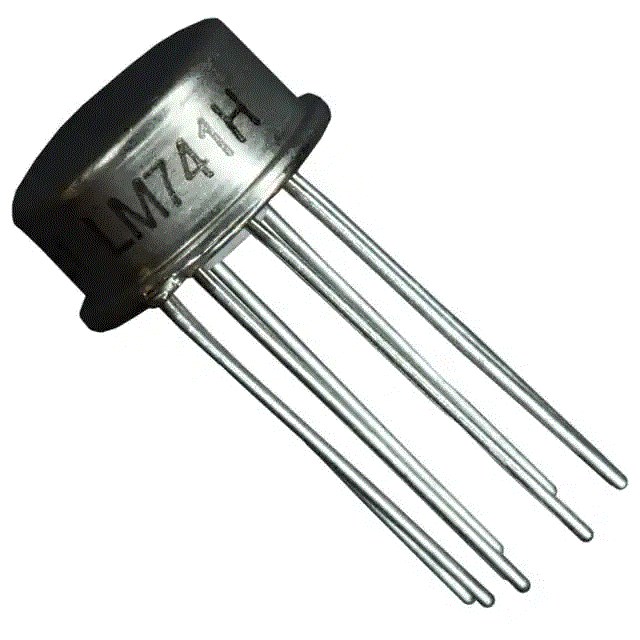 LM741H Operational Amplifier: Pinout, Datasheet, and Functional Block Diagram
LM741H Operational Amplifier: Pinout, Datasheet, and Functional Block Diagram27 July 20215382
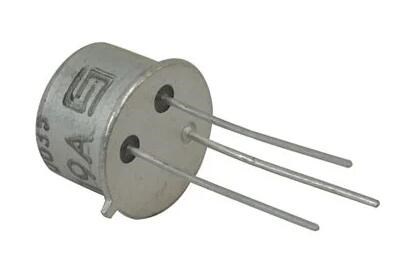 2N2219A NPN General Purpose Transistor: 40V, TO-39, 2N2219A Equivalents
2N2219A NPN General Purpose Transistor: 40V, TO-39, 2N2219A Equivalents09 March 20221773
![BT152-800R,127 Thyristor: Pinout, Datasheet, Application [FAQ]](https://res.utmel.com/Images/Article/8573419c-625e-4147-8b0e-f9a35c2cdd6e.jpg) BT152-800R,127 Thyristor: Pinout, Datasheet, Application [FAQ]
BT152-800R,127 Thyristor: Pinout, Datasheet, Application [FAQ]27 April 20226876
 STM32G070CBT6: Overview, Features, and Datasheet
STM32G070CBT6: Overview, Features, and Datasheet11 December 20231690
 M16C/26A Group: Single-Chip 16-Bit CMOS Microcomputer Overview
M16C/26A Group: Single-Chip 16-Bit CMOS Microcomputer Overview28 February 202481
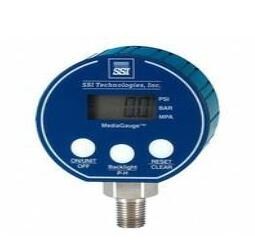 MG-3000-A-9V-R Digital Pressure Gauge: Datasheet, Features, Application
MG-3000-A-9V-R Digital Pressure Gauge: Datasheet, Features, Application25 August 2021459
 Power of Dual and Isomorphic Principles in Power Electronics
Power of Dual and Isomorphic Principles in Power Electronics24 July 20232687
 The U.S. Semiconductor Sector Faces Workforce Challenges Amidst Surging Demand
The U.S. Semiconductor Sector Faces Workforce Challenges Amidst Surging Demand27 November 20231958
 GenAI Boosts Semiconductor Market with First Revenue Increase in Five Quarters
GenAI Boosts Semiconductor Market with First Revenue Increase in Five Quarters25 March 20242192
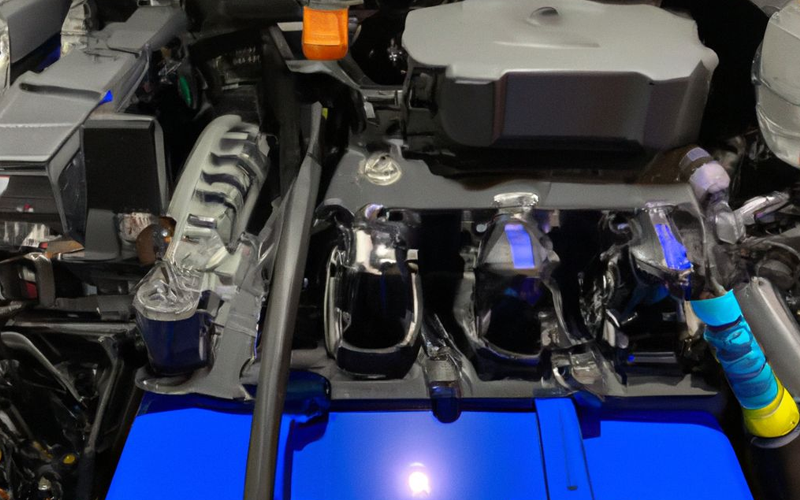 Hybrid Sources Powered Electric Vehicles - Part 1
Hybrid Sources Powered Electric Vehicles - Part 108 March 20231744
 Top Chinese Photoresist Manufacturers Guide
Top Chinese Photoresist Manufacturers Guide07 January 20227367
 How much do you know about HDMI Cable?
How much do you know about HDMI Cable?28 October 20213181
 Texas Semiconductor Summit: A Step Towards Overcoming Chip Shortage
Texas Semiconductor Summit: A Step Towards Overcoming Chip Shortage14 October 20231005
 Can ARM challenge X86 in the field of PC chips?
Can ARM challenge X86 in the field of PC chips?06 June 20224010
Xilinx Inc.
In Stock: 2000
United States
China
Canada
Japan
Russia
Germany
United Kingdom
Singapore
Italy
Hong Kong(China)
Taiwan(China)
France
Korea
Mexico
Netherlands
Malaysia
Austria
Spain
Switzerland
Poland
Thailand
Vietnam
India
United Arab Emirates
Afghanistan
Åland Islands
Albania
Algeria
American Samoa
Andorra
Angola
Anguilla
Antigua & Barbuda
Argentina
Armenia
Aruba
Australia
Azerbaijan
Bahamas
Bahrain
Bangladesh
Barbados
Belarus
Belgium
Belize
Benin
Bermuda
Bhutan
Bolivia
Bonaire, Sint Eustatius and Saba
Bosnia & Herzegovina
Botswana
Brazil
British Indian Ocean Territory
British Virgin Islands
Brunei
Bulgaria
Burkina Faso
Burundi
Cabo Verde
Cambodia
Cameroon
Cayman Islands
Central African Republic
Chad
Chile
Christmas Island
Cocos (Keeling) Islands
Colombia
Comoros
Congo
Congo (DRC)
Cook Islands
Costa Rica
Côte d’Ivoire
Croatia
Cuba
Curaçao
Cyprus
Czechia
Denmark
Djibouti
Dominica
Dominican Republic
Ecuador
Egypt
El Salvador
Equatorial Guinea
Eritrea
Estonia
Eswatini
Ethiopia
Falkland Islands
Faroe Islands
Fiji
Finland
French Guiana
French Polynesia
Gabon
Gambia
Georgia
Ghana
Gibraltar
Greece
Greenland
Grenada
Guadeloupe
Guam
Guatemala
Guernsey
Guinea
Guinea-Bissau
Guyana
Haiti
Honduras
Hungary
Iceland
Indonesia
Iran
Iraq
Ireland
Isle of Man
Israel
Jamaica
Jersey
Jordan
Kazakhstan
Kenya
Kiribati
Kosovo
Kuwait
Kyrgyzstan
Laos
Latvia
Lebanon
Lesotho
Liberia
Libya
Liechtenstein
Lithuania
Luxembourg
Macao(China)
Madagascar
Malawi
Maldives
Mali
Malta
Marshall Islands
Martinique
Mauritania
Mauritius
Mayotte
Micronesia
Moldova
Monaco
Mongolia
Montenegro
Montserrat
Morocco
Mozambique
Myanmar
Namibia
Nauru
Nepal
New Caledonia
New Zealand
Nicaragua
Niger
Nigeria
Niue
Norfolk Island
North Korea
North Macedonia
Northern Mariana Islands
Norway
Oman
Pakistan
Palau
Palestinian Authority
Panama
Papua New Guinea
Paraguay
Peru
Philippines
Pitcairn Islands
Portugal
Puerto Rico
Qatar
Réunion
Romania
Rwanda
Samoa
San Marino
São Tomé & Príncipe
Saudi Arabia
Senegal
Serbia
Seychelles
Sierra Leone
Sint Maarten
Slovakia
Slovenia
Solomon Islands
Somalia
South Africa
South Sudan
Sri Lanka
St Helena, Ascension, Tristan da Cunha
St. Barthélemy
St. Kitts & Nevis
St. Lucia
St. Martin
St. Pierre & Miquelon
St. Vincent & Grenadines
Sudan
Suriname
Svalbard & Jan Mayen
Sweden
Syria
Tajikistan
Tanzania
Timor-Leste
Togo
Tokelau
Tonga
Trinidad & Tobago
Tunisia
Turkey
Turkmenistan
Turks & Caicos Islands
Tuvalu
U.S. Outlying Islands
U.S. Virgin Islands
Uganda
Ukraine
Uruguay
Uzbekistan
Vanuatu
Vatican City
Venezuela
Wallis & Futuna
Yemen
Zambia
Zimbabwe



















